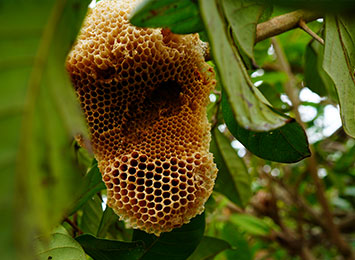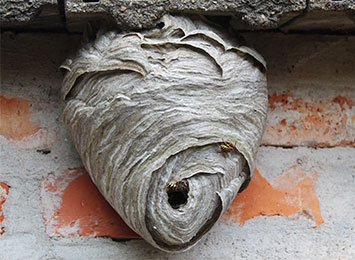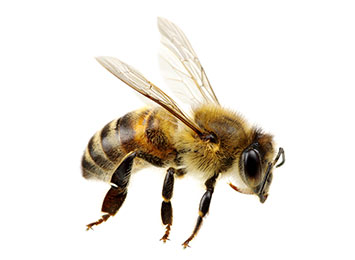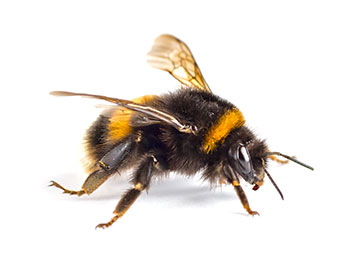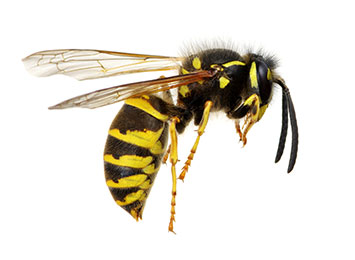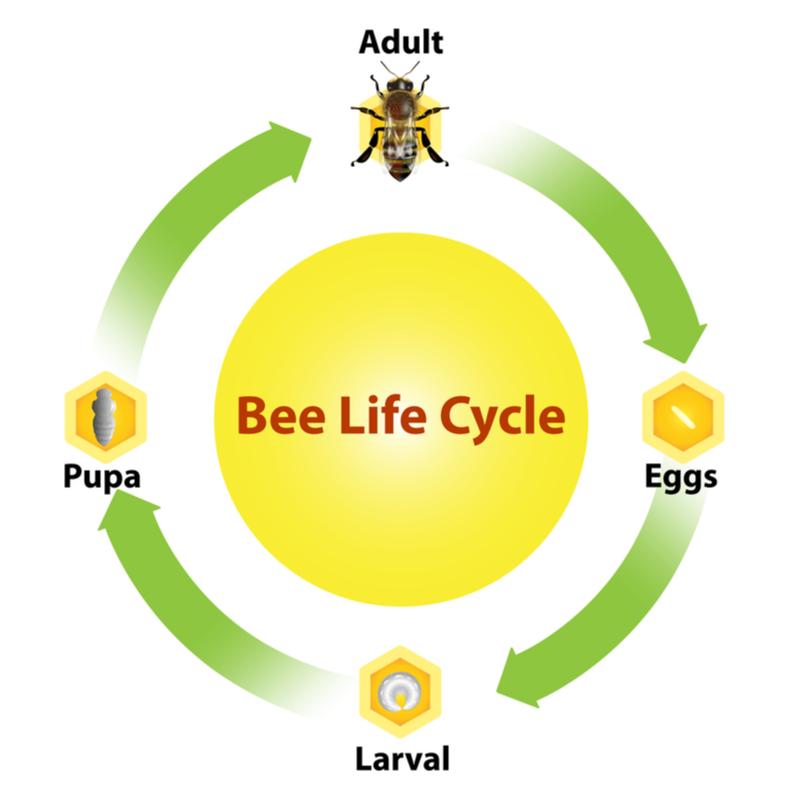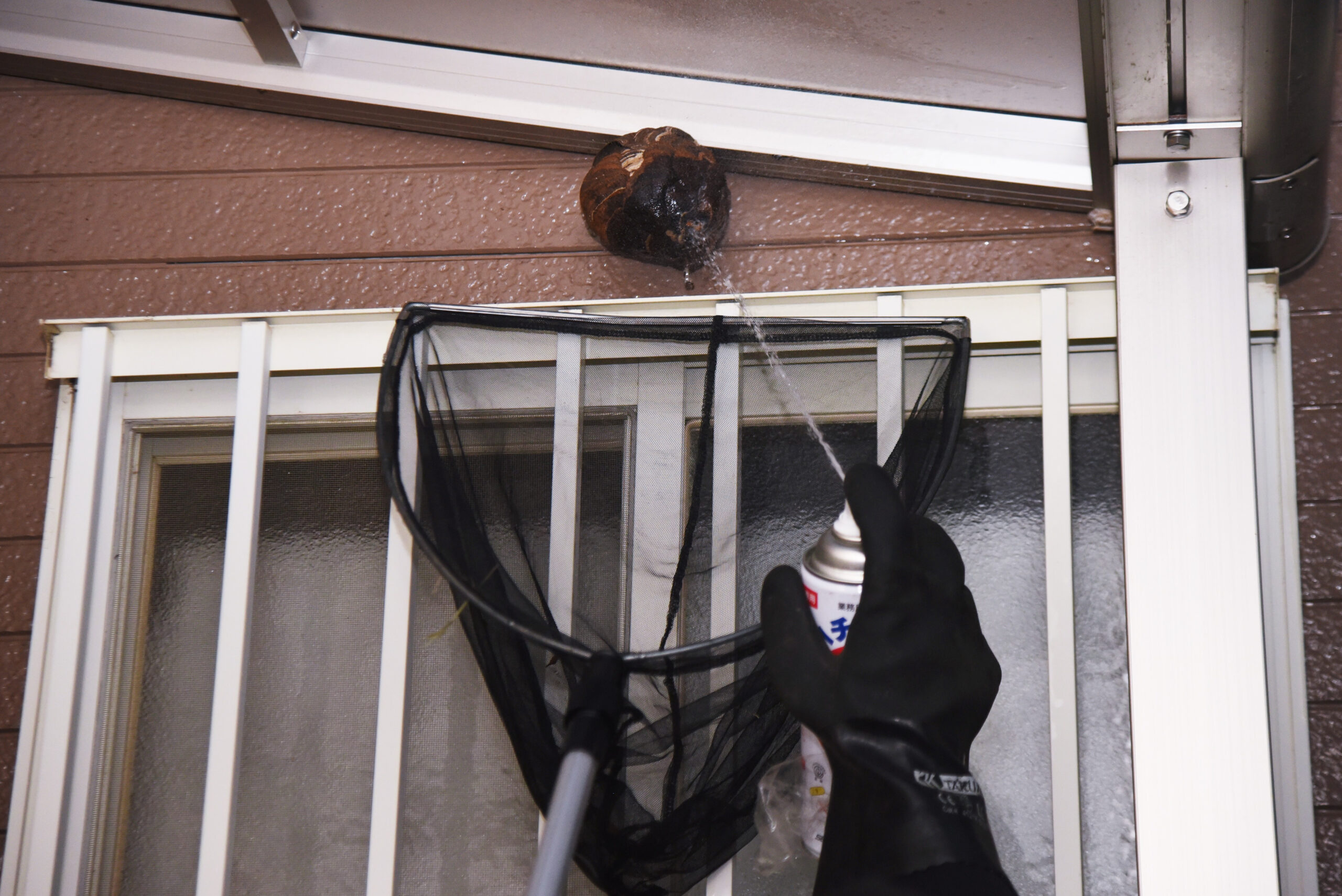Reproduction and Life Cycle
All bees and wasps undergo similar metamorphosis through their development stages which include egg, larvae, pupa, and adult.
A queen bee spends the majority of her life in the honeycomb laying eggs. These eggs take around 3 days to hatch. Newly hatched larvae remain in their cells, where they’re fed by workers until they pupate. Pupation takes anywhere between 15 days to a month. After pupating, adult bees emerge ready to perform their role within the hive.
Eusocial wasps undergo a life cycle similar to bees. A wasp queen will live for as long as a year and can lay up to 25,000 eggs in her lifetime. After they hatch, wasp workers feed larvae for 1 to 3 weeks, at which point they pupate.
Solitary wasps will mate and forage alone. These wasps may lay eggs on prey, so their offspring can consume the prey as their primary food source when they hatch.

